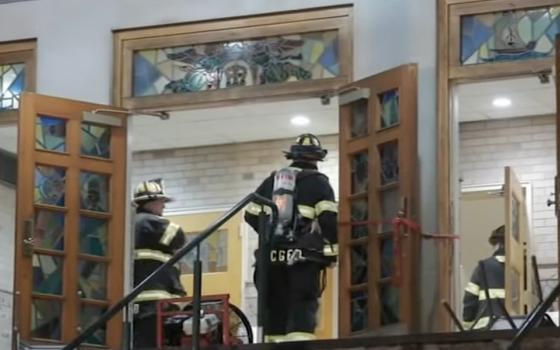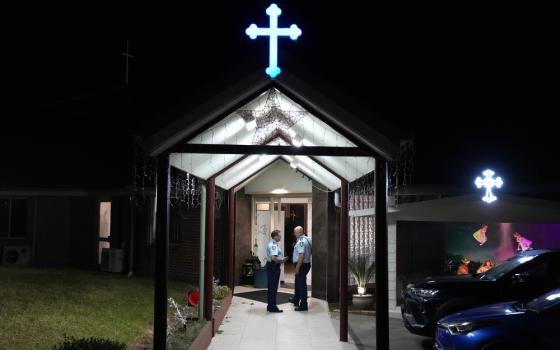Last week, I read reactions to an Israeli court's verdict on the civil lawsuit filed by the parents of Rachel Corrie, a 23-year-old American activist who was crushed to death by an Israeli military bulldozer, a US-made D-9 Caterpillar, in March 2003 while trying to prevent the demolition of Palestinian homes in the Gaza Strip.
Corrie's parents filed the lawsuit after an Israeli military investigation into Rachel's killing proved inadequate. Craig and Cindy Corrie, who sought only $1 in damages, did not want compensation, but a deeper reckoning from those responsible for their daughter's death.
The recent verdict from a district court in the Israeli city of Haifa offered nothing in that regard. Judge Oded Gershon dismissed all charges levied against the state in the Corrie lawsuit. His 169-page ruling not only exonerated the Israeli military, claiming that under the circumstances, its "conduct was impeccable," but blamed Rachel for her own death, saying she had entered a war zone and therefore "gotten herself into a dangerous situation ... She did not stay away, as any sensible person would have done."
Gershon's ruling highlights "a pattern of immunity" for Israeli military violations against civilians and human rights defenders in the Occupied Territories, said Amnesty International in its press release on the Corrie verdict. To be fair, few militaries convict themselves of war crimes. According to the standards of international humanitarian law, wanton destruction of civilian property is not permissible in warfare (though it happens all the time) and soldiers are to take great care not to kill civilians.
"Rachel Corrie was clearly identifiable as a civilian, as she was wearing a fluorescent orange vest when she was killed," said Amnesty International in its release. "She and other non-violent activists had been peacefully demonstrating against the demolitions for hours when the Israeli military bulldozer ran over her."
If Gershon's denunciation of Rachel as dangerously irresponsible was intended as a smackdown to those who nonviolently stand with civilians in war zones, it was ineffective. The International Solidarity Movement, to which Rachel belonged, said the judge's ruling showed Israel's legal system could not be trusted to administer justice according to international standards and urged supporting the boycott, divestment, and sanctions movement as a means for holding Israel accountable.
"The verdict is a green light for Israeli soldiers to use lethal force against human rights defenders and puts Palestinian and international human rights defenders in mortal danger," the group's statement said. "This will not deter us. As long as our Palestinian sisters and brothers want our presence, the ISM will continue to find ways to break Israel's siege and stand in solidarity with the Palestinian people. As Rachel's mother Cindy put it, 'There were children behind the walls of the home Rachel was trying to protect ... We should have all been there.'"
The essay, "Empty-handed" by Israeli pacifist and blogger Adam Keller, provides the context for Rachel's action and death.
Keller writes that Rachel was indeed in a combat zone, a very long and narrow wedge of land along the Egyptian border the Israeli military had dubbed the "Philadelphi Route." Here, soldiers were waging a difficult and "frustrating war" in which they were charged with maintaining a "suffocating siege" over a million embittered Gazans. Israeli armored personnel carriers were getting blown up, and Keller recalls TV footage of Israeli troops down on their hands on knees, along the "Philadelphi," looking for the body parts of their comrades.
To combat this hazard, an Israeli general ordered the bulldozing of Palestinian houses to create a "sterile" corridor where weapons and soldiers could safely pass.
Civilians lived along the "Philadelphi" -- tens of thousands of civilians, Keller notes. They had lived there long before it was combat zone, many of them refugees from the Israeli/Arab war of 1948. When the American-made bulldozers began to "shave off" their homes, most residents managed to jump out of the way, but those not quick enough were buried under the rubble. According to the Israeli human rights organization B'tselem, the Israeli military demolished about 1,700 homes in the Gazan city of Rafah, between 2000 and 2004, leaving 17,000 people homeless.
Rachel did what a person who "cares very, very much, could to do in such a situation," Keller writes. She stood empty-handed and unarmed against tanks and bulldozers "to cry out toward those who really did not want to hear." She used her body to impede a general's deadly strategy.
There is no doubt Rachel knowingly got herself into a dangerous situation, which is not something a "sensible" person would do, Keller acknowledges. But he then points out that "Jewish and world history mark a young boy named David, who knowingly placed himself in a very dangerous situation, facing a fearsome giant called Goliath. It might be that he was not a very sensible person, either."
The demolition of one's home is deeply traumatic. When our homes, the most intimate of havens, are crushed, confidence in the solidity and value of life can collapse. This is true especially for children. According to Palestinian psychologist Eyad Serraj, 55 percent or more of Palestinian kids who became suicide bombers had their homes demolished.
Rachel's critics have denounced her concern for Palestinian rights as naïve and fueling extremism. Quite the opposite is true. A remarkably wise 23-year-old, she made connections, saw the big picture. Her empty-handed intervention in the "combat" zone of Rafah was an attempt to break the cycle of violence, to stop the house demolitions that fueled the despair that lead to suicide bombings.
It was a dangerously sensible action, of benefit to Palestinians and Israelis alike.




